Title
A Call for Increased Focus on Wetland Ecosystems in California
Author Information
Elizabeth Wood
American River College, Geography 350: Data Acquisition in GIS; Fall 2012
Introduction
For years now the state of California has beens swinging through periods of wet and dry, either at high risk of flooding or teetering over the precipice of drought. In the early 2000's the state was receiving little rain during the winters and thus having insufficient ground water reserves and too thin a snow pack accumulated in the Sierra Nevadas to carry through the dryest months of the year. In the Sacramento Valley, locals noted the decreased levels of our waterways and popular summer retreats such as Folsom Lake, Lake Natoma, and the American River where the erosion and water marks from previous years are still visible. Meanwhile, down south wildfires raged on a scale not before see\n. . Some time before, during the 1980's and 90's, the Northern half of the state was prone to flooding and there were worries about the integridy of the Sacramento-San Joaquin Valley levee system.
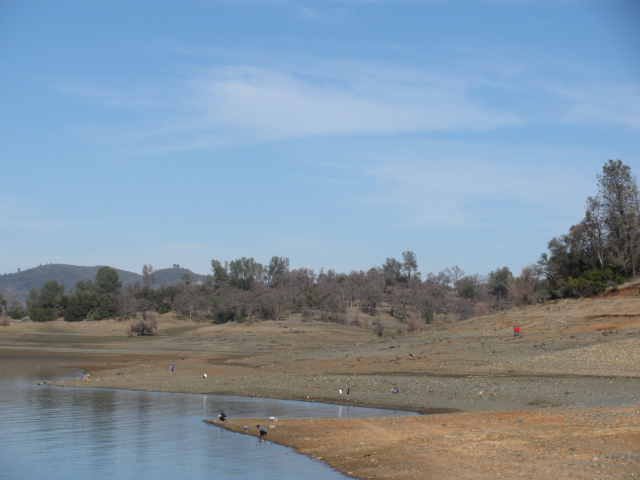
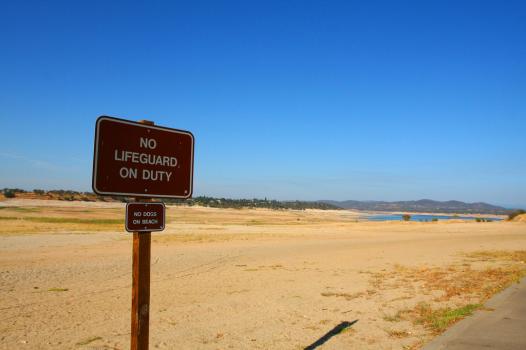
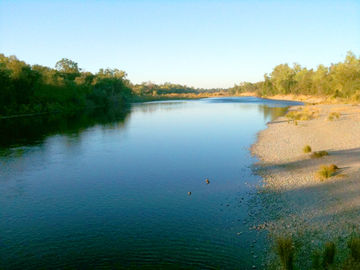
(The vast expanses of shore-line visible in these pictures was, only a few years ago, completely submerged.)
As the recent dry period begins to ease, however, we may just have an opportunity to mitigate future drought and flood conditions by investing some of our time and resources into restoring our native wetlands. Wetland ecosystems worldwide provide a wealth of benefits for their surrounding areas and occur naturally in Delta Regions and flood-prone valleys. Wetlands encourage ground water build-up, water purification, nutrient rich soils, and safe storage of carbon that rivals that of forests. Because wetlands form in large, flat areas most of these ecosystems, in California and other states, have long been drained and developed, however some remain and many conservationist organizations are calling for more to be fostered and protected. Where once, before the dawn of industry, over five million acres of California consituted wetlands we now boast less than just over half that amount (Baird and Snow, 2010).

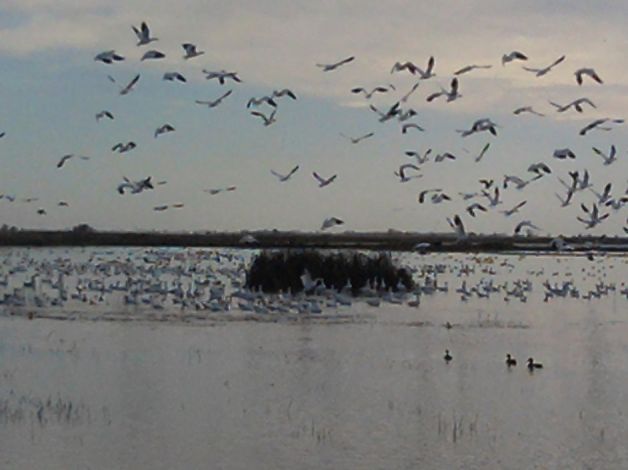
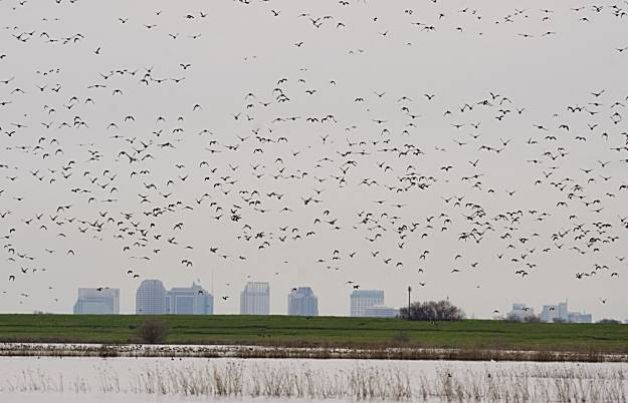
The primary vehicle for my investigation was internet research which lead me to various magazine and scientific journal articles, Califronia Natural Resources Agency reports, university publications, and a slew of conservationist websites.
Background
In 1990 Joy P. Michaud with the Washington State Department of Ecology published a paper on Wetlands called At Home with Wetlands - A Landowners Guide that, in Chapter 2, summarizes the long list of benefits of native wetlands.
In June of 2010 Baird and Snow submitted a report to the California Natural Resources Agency detailing the progress of the 10 year Wetlands Project that was underway in the Sacramento area, which included, current wetlands policy, three case studies of existing wetlands' growth and reduction, and a list of recommendations. This report came as a follow-up to the 1998 report State of the State's Wetlands (Dinisoff and Potter).
The July-August edition of The Environmental Forum featured an article (Emmett-Mattox, Crooks, and Findsen, 2012) that investigated whether or not Tidal Wetlands should be considered Greenhouse Offset Credits and called for the restoration and management of these ecosystems.
Joan Hartman recalls in her 2010 article the 1997 spending bill that Governor Wilson Veto'ed that would have allotted $6.5 million to the revitalization of Southern California's little known wetlands; an area that arguably needs the wetlands more than any other in the state.
Ducks Unlimited, a nationwide Wetlands Conservationist organization, has an interest in designating more areas in Sacramento and the surrounding counties as wetlands to preserve waterfowl populations. The Tennessee-based group is looking into buying up development rights to land as of 2011 when this article was posted on the Sacramento Business Journal website. Ducks Unlimited is a group dedicated to wetland conservation for the purposes of responsible waterfowl hunting that has been working towards its goals since the Dust Bowl.
In Northern California, Ducks Unlimited is not alone. The Delta Wetlands Project is a recently developed, private/public sector plan to improve the Sacramento Delta system by taking four of the low-lying islands in the Delta and optimizing them for either water storage or wildlife habitation with the aim of aiding summer water shortages and increasing local wildlife diversity. The Project is based on 20 years of wetland study and modeling and estimates a mere 3 years for implementaion.
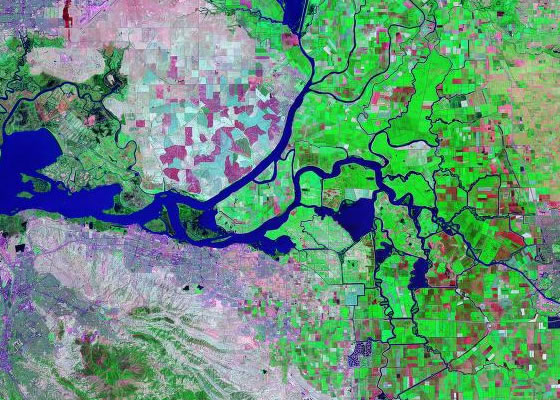
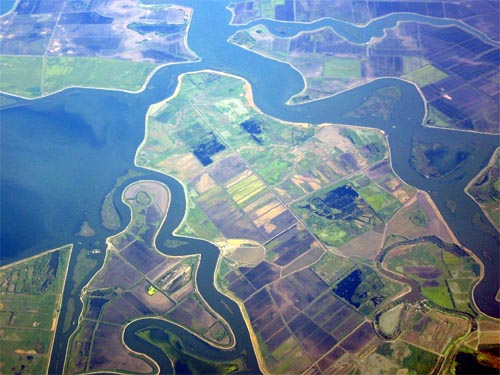
(The River Delta is comprised of many islands formed by the build-up of sediment that falls out of the rivers' waters when they reach the Pacific Ocean.)
Methods
My internet research was fairly straight forward, beginning with searching "Sacramento wetlands" and following threads and trails of websites from the first wave of links I was provided. Seperate searches for wetland benefits, the California water crisis, and for particular publications referenced by websites and journal articles followed. Conservationist sites that provided thorough references were deemed acceptable sources. Wikipedia was not. Local news sites were helpful in finding dates and details about the water crisis in the early 2000's and the Governor's actions regarding the drought, but were not used for anything else. For the most part I kept to the articles and state reports feeling them to be more reputable sources of information than most websites.
Results
Be they marshes or bogs, swamps or fens, wetland ecosystems have inherent benefits that stand to aide the Golden State in many respects.
First and foremost is ground water recharge. Wetlands forms in expanses of flat land where the water table is near the ground's surface or where there is seepage from nearby water features such as lakes, streams and rivers, and the ocean. Because these areas are flat the water that stands there remains largely still or slow-moving allowing ample time and opportunity for water to permeate the ground and refill subterranean quifers, restoring our ground water supplies. This can greately ease the California need for water and great lift a weight off of our farmers who feed a majority of the nation and for the last few years have been doing so under tight restrictions. Even Southern California, a region that is typically considered to be completely desert has vast acres of drained wetlands waiting to be restored. If time and effort were budgeted for those restorations many coastal areas may not need to rely so heavily on water brought in via the aqueducts and the transported water could be used more exclusively by the truly desolate regions of the state.
And this is not the only boon to our water supply wrought by the wetlands. The water that does seep back into the water table leaves many of its excess nutrients, heavy metals, and pollutants in the soil of the marsh, similar to how a typical kitchen water filter works to filter out those same particles from tap water, thereby creating a healthier water supply. California has a rich history of gold mining that has lead to tainting our streams and rivers with heavy metal contaminates, which are still present in the water today. In our increasingly health conscous state, clean water has become a priority. More people drink out of water bottles than ever before, sinks are fitted with filters and water filtering pitchers are common. Clean water promotes better quality of life for plants and animals. Today our lakes and rivers foster parasitic amoeba such as the Naegleria fowleri which is killing people along the East Coast.
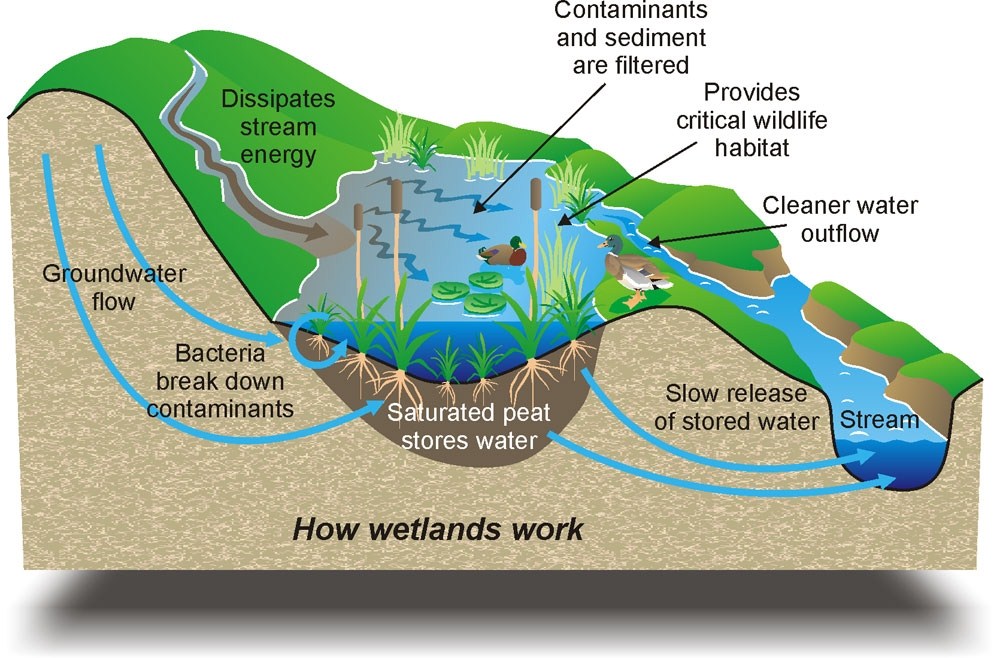
Not only does ground water recharge store water but it simultaneously protects against flood events. In the Sacramento-San Joaquin Valley where flood risks are high during non-drought years (the valley itself is a floodplain - an area that is a seasonal wetland and can normally be expected to flood annually), wetland ecosystems offer 2 levels of protection. First, the very act of directing excess water into the water table and inflating volume of stored water reduces the rate at which that water enters the stream system and thus supports managable water levels. A large factor in the flooding problems of any urbanized area is the lack of sufficient open ground on which the water can stand and eventually seep back into the water table from where it would normally be slowly released into the area's streams and rivers. Urban areas redirect all of this water into city drainage and sewer systems which then dump it straight into the local rivers.
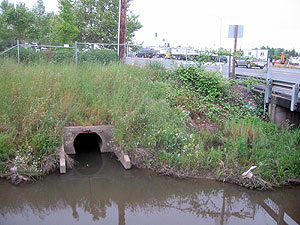

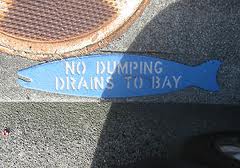

(Drains like this can be found nationwide.)
Additionally, wetlands by design are places to store extra water below or above the surface. Wetland bordering rivers and streams are meant to take on overflow, water that seeps through the stream banks or rises above the banks, easing the heavy load on the river itself in times of exceptionally heavy rain fall. This essentially has the opposite effect of the current levee system now in place in the Sacramento-San Joaquin Valley, which is designed to hold back the rising waters and keep everything in the river bed.
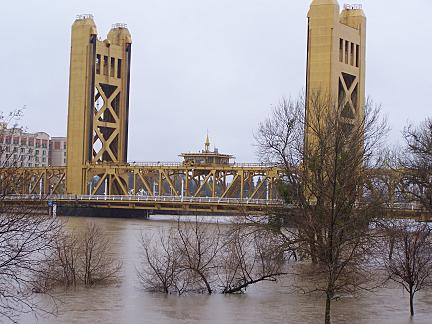
(The Sacramento River floods in the heart of Downtown.)

(The floodplain that is the Sacramento Valley. Entire cities are built in a seasonal wetland.)
The sponge-like quality of wetland soil takes in more than water and polluctants, it also stores carbon extracted from the atmosphere. In fact, wetalnds extract and store such high volumes of carbon that some Glorabl Warming activist groups are recommending that wetaland ecosystems be considered for Carbon Offset Credits, and some studies have shown that these ecosystems store as much carbon as, if not more than, most forests.


Analysis
My research into the wetlands ecosystem and how it could affect the state of California unearthed a slew of reasons to invest more of our time and money into maintaining and restoring this long neglected and scorned facet of our local geography. The geographic benefits alone are staggering, and that is without touching upon the later effects investment might have on the California economics by way of increased tourism, insurance changes, decreased post-disaster rebuilds, and the possible increases in agriculture production and sales due to more flexible water allowances, or the possible job increases from inflating the number of State Parks Servicemen and women to accomodate the new natural areas that would need regulation. Nor was I able to touch on the benefits to education or overall quality of life that having more designated natural parks and more varied wildlife could bring.
Wetlands are hot topic these days from what I have gathered traversing the internet. Nationwide there is talk of wetlands and there is no shortage of information avaliable about them and their benefits to the ecosystems they formed in.
Conclusion
Overall it is clear that increasing the acerage of wetlands in the state will be beneficial to the quality of life in the state of California. The aide that wetland ecosystems provide in both times of drought and of flood risk would be invaluable for both the Northern and Southern regions of the state which are both different ecosystems of thier own with their own traits and needs. The wealth of impovement to both regions that is possible with further investment into our wetlands is almost beyond imagining.
References
Baird and Snow, 2010. Report to the CA Natural Resources AgencyState of the Wetlands
California Water Resources, 2012. http://www.waterplan.water.ca.gov/
Ducks Unlimited, 2012. http://www.ducks.org/about-du?poe=hometxt
Emmett-Mattox, Crooks, and Findsen, 2012. Grasses and Gasses The Environmental Forum
Fox News, 2012. CDC http://www.foxnews.com/health/2011/08/15/deadly-amoeba-suspected-in-florida-teens-death/
Fryska, 2008. Gold Mining and Its Environmental Impacts
Hartman, 2010. The Southern California Wetlands Recovery Project: The Unfolding Story
Michaud, 1990. At Home with Wetlands - A Landowners Guide
The California Water Alliance, 2012. http://www.californiawateralliance.org/
The Delta Wetlands Project, 2012. http://www.deltawetlands.com/index.html
The Water Encyclopedia, 2012. http://www.waterencyclopedia.com/Tw-Z/Wetlands.html
Turner, 2011. The Sacramento Buisness Journal Ducks Unlimited Eyes More Wetland


















